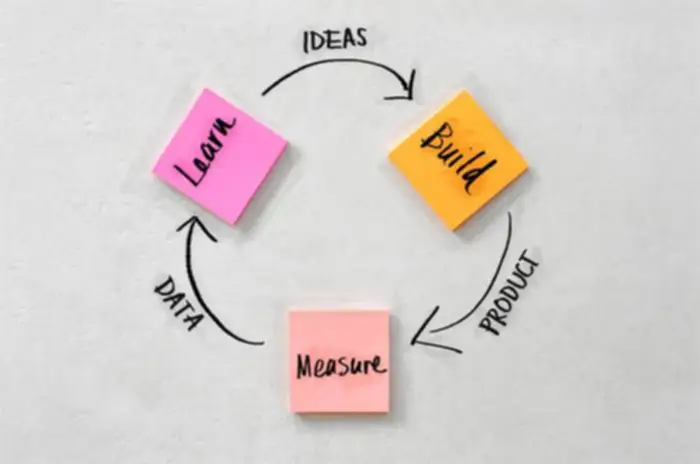These properties underpin the use of the method of least squares for all types of data fitting, even when the assumptions are not strictly valid. Econometric models often rely on Least Squares regression to analyze relationships between economic variables and to forecast future trends based on historical data. Where \(y\) is the dependent variable, \(x\) is the independent variable, \(m\) is the slope, and \(q\) is the intercept.
Example: Predicting Plant Height Based on Sun Exposure
This process often involves the least squares method to determine the best fit regression line, which can then be utilized for making predictions. In analyzing the relationship between weekly training hours and sales performance, we can utilize the least squares regression line to determine if a linear model is appropriate for the data. The process begins by entering the data into a graphing calculator, where the training hours are represented as the independent variable (x) and sales performance as the dependent variable (y).
Using the Linear Regression T Test: LinRegTTest
It is a generalization of Deming regression and also of orthogonal regression, and can be applied to both linear and non-linear models. The objective of OLS is to find the values of \beta_0, \beta_1, \ldots, \beta_p that minimize the sum of what is a variable cost per unit squared residuals (errors) between the actual and predicted values. Least squares regression analysis or linear regression method is deemed to be the most accurate and reliable method to divide the company’s mixed cost into its fixed and variable cost components. This is because this method takes into account all the data points plotted on a graph at all activity levels which theoretically draws a best fit line of regression.
The Method of Least Squares
- Often the questions we ask require us to make accurate predictions on how one factor affects an outcome.
- It’s a powerful formula and if you build any project using it I would love to see it.
- The Least Squares method is a fundamental technique in both linear algebra and statistics, widely used for solving over-determined systems and performing regression analysis.
- This technique is broadly relevant in fields such as economics, biology, meteorology, and greater.
- Least square method is the process of finding a regression line or best-fitted line for any data set that is described by an equation.
We have two datasets, the first one (position zero) is for our pairs, so we show the dot on the graph. There isn’t much to be said about the code here since it’s all the theory that we’ve been through earlier. We loop through the values to get sums, averages, and all the other values we need to obtain the coefficient (a) and the slope (b). By the way, you might want to note that the only assumption relied on for the above calculations is that the relationship between the response \(y\) and the predictor \(x\) is linear. Least squares is used as an equivalent to maximum likelihood when the model residuals are normally distributed with mean of 0. In actual practice computation of the regression line is done using a statistical computation package.
- Where \(y\) is the dependent variable, \(x\) is the independent variable, \(m\) is the slope, and \(q\) is the intercept.
- For example, if you analyze ice cream sales against daily high temperatures, you might find a positive correlation where higher temperatures lead to increased sales.
- Sometimes it is helpful to have a go at finding the estimates yourself.
- Our teacher already knows there is a positive relationship between how much time was spent on an essay and the grade the essay gets, but we’re going to need some data to demonstrate this properly.
These values can be used for a statistical criterion as to the goodness of fit. When unit weights are used, the numbers should be divided by the variance of an observation. Least Squares regression is widely used in predictive modeling, where the piece rates and commission payments goal is to predict outcomes based on input features.
Least Square Method Formula
If we wanted to draw a line of best fit, we could calculate the estimated grade for a series of time values and then connect them with a ruler. As we mentioned before, this line should cross the means of both the time spent on the essay and the mean grade received (Figure 4). Specifying the least squares regression line is called the least squares regression equation. Let us have a look at how the data points and the line of best fit obtained from the Least Square method look when plotted on a graph. Tofallis (2015, 2023)1819 has extended this approach to deal with multiple variables. The calculations are simpler than for total least squares as they only require knowledge of covariances, and can be computed using standard spreadsheet functions.
This suggests that the relationship between training hours and sales performance is nonlinear, which is a critical insight for further analysis. This method, the method of least squares, finds values of the intercept and slope coefficient that minimize the sum of the squared errors. It helps us predict results based on an existing set of data as well as clear anomalies in our data. Anomalies are values that are too good, or bad, to be true or that represent rare cases. The least-square regression helps in calculating the best fit line of the set of data from both the activity levels and corresponding total costs.
Sometimes it is helpful to have a go at finding the estimates yourself. If you install and load the tigerstats (Robinson and White 2020) and manipulate (Allaire 2014) packages in RStudio and then run FindRegLine(), you get a chance to try to find the optimal slope and intercept for a fake data set. Click on the “sprocket” icon in the upper left of the plot and you will see something like Figure 6.17. This interaction can help you see how the residuals are being measuring in the \(y\)-direction and appreciate that lm takes care of this for us. The Least Squares method is a fundamental technique in both linear algebra and statistics, widely used for solving over-determined systems and performing regression analysis. This article explores the mathematical foundation of the Least Squares method, its application in regression, and how matrix algebra is used to fit models to data.
For this reason, this type of regression is sometimes called two dimensional Euclidean regression (Stein, 1983)12 or orthogonal regression. The idea behind finding the best-fit line is based on the assumption that the data are scattered about a straight line. The criteria for the best-fit line is that the sum of the squared errors (SSE) is minimized, that is, made as small as possible. Any other line you might choose would have a higher SSE than the best-fit line.
In literal manner, least square method of regression minimizes the sum of squares of errors that could be made based upon the relevant equation. The Least Square method is operating ratio top 3 different examples of operating ratio a popular mathematical approach used in data fitting, regression analysis, and predictive modeling. It helps find the best-fit line or curve that minimizes the sum of squared differences between the observed data points and the predicted values. This technique is widely used in statistics, machine learning, and engineering applications. The Least Squares method is a mathematical procedure used to find the best-fitting solution to a system of linear equations that may not have an exact solution. It does this by minimizing the sum of the squared differences (residuals) between the observed values and the values predicted by the model.
Look at the graph below, the straight line shows the potential relationship between the independent variable and the dependent variable. The ultimate goal of this method is to reduce this difference between the observed response and the response predicted by the regression line. The data points need to be minimized by the method of reducing residuals of each point from the line. Vertical is mostly used in polynomials and hyperplane problems while perpendicular is used in general as seen in the image below. When the independent variable is error-free a residual represents the “vertical” distance between the observed data point and the fitted curve (or surface). In total least squares a residual represents the distance between a data point and the fitted curve measured along some direction.
OLS then minimizes the sum of the squared variations between the determined values and the anticipated values, making sure the version offers the quality fit to the information. However, if we attempt to predict sales at a temperature like 32 degrees Fahrenheit, which is outside the range of the dataset, the situation changes. In this case, the correlation may be weak, and extrapolating beyond the data range is not advisable. Instead, the best estimate in such scenarios is the mean of the y values, denoted as ȳ. For instance, if the mean of the y values is calculated to be 5,355, this would be the best guess for sales at 32 degrees, despite it being a less reliable estimate due to the lack of relevant data.
The idea behind the calculation is to minimize the sum of the squares of the vertical errors between the data points and cost function. The red points in the above plot represent the data points for the sample data available. Independent variables are plotted as x-coordinates, and dependent ones are plotted as y-coordinates. The equation of the line of best fit obtained from the Least Square method is plotted as the red line in the graph.




